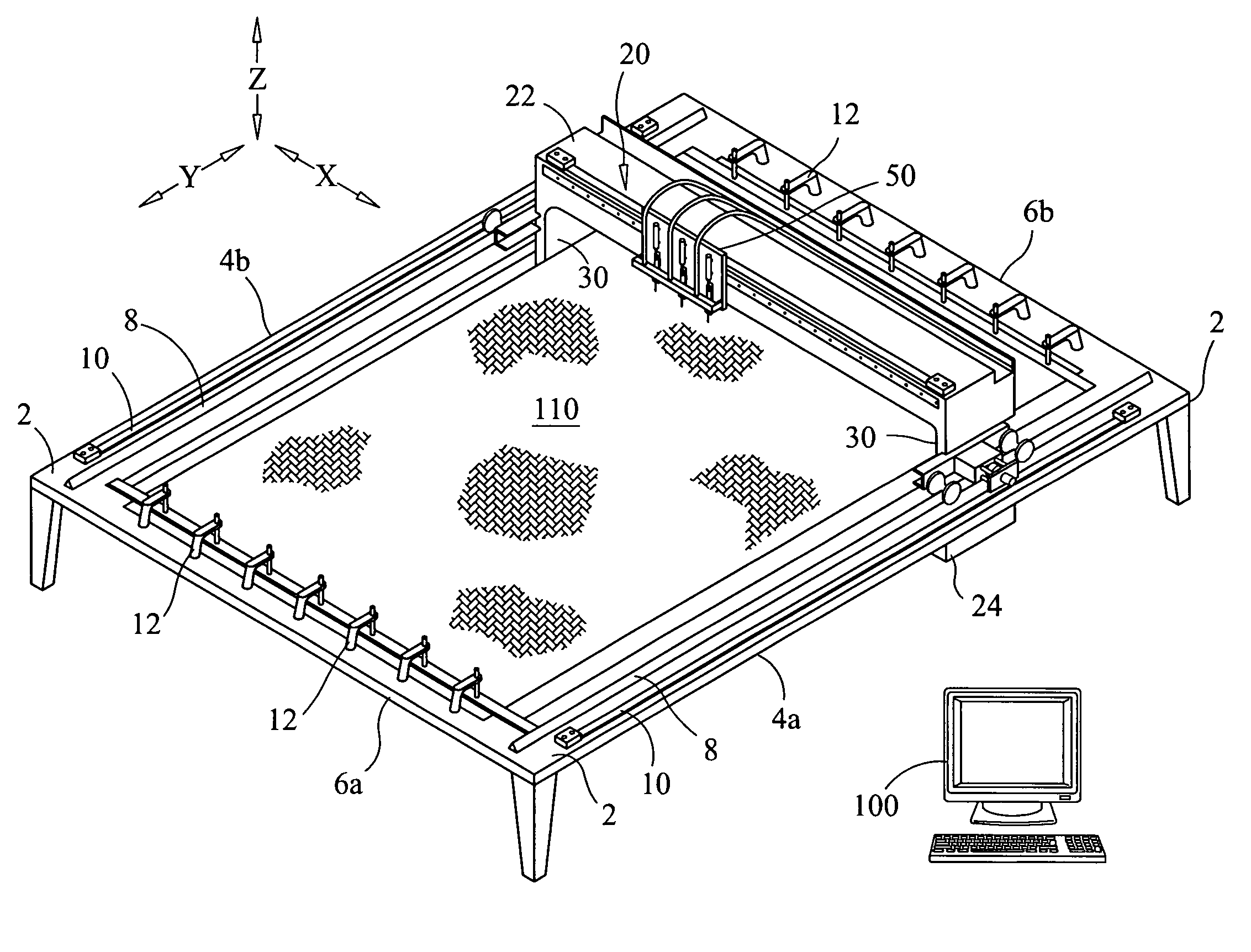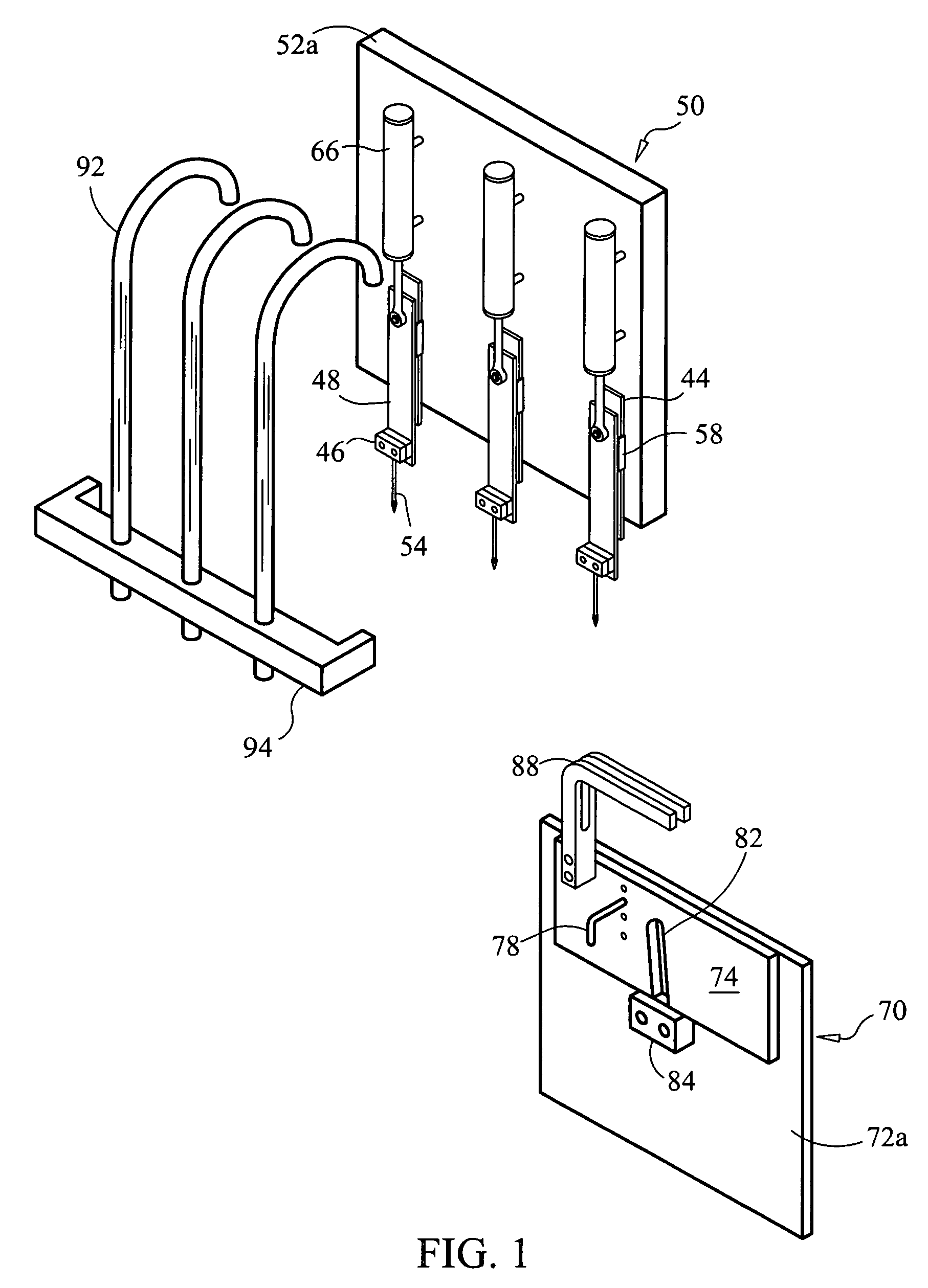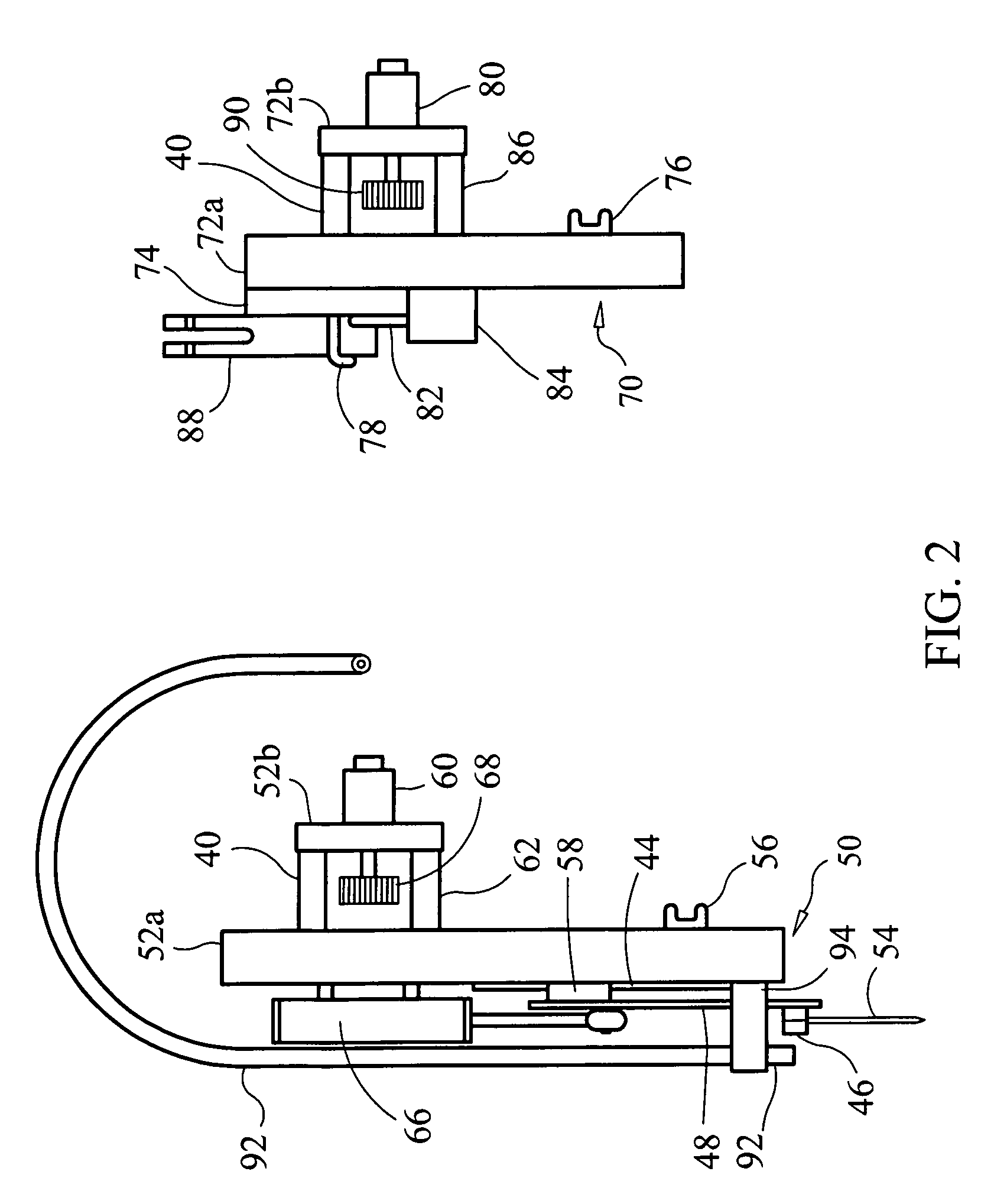Tufting machine for producing athletic turf having a graphic design
a tufting machine and graphic design technology, applied in the field of tufting machines, can solve the problems of not being able to produce high-detailed color images, conventional tufting machines that employ backing feed mechanisms are not optimum for tufting multicolored designs, and tufting needles may fail to insert yarn tufts at the precise level, so as to increase production efficiency
- Summary
- Abstract
- Description
- Claims
- Application Information
AI Technical Summary
Benefits of technology
Problems solved by technology
Method used
Image
Examples
Embodiment Construction
[0024]It should be understood that the present disclosure has particular applicability to machines used for manufacturing graphically designed portions of artificial athletic turf and other cut pile articles, but it can be applicable to tufting machines generally. This disclosure, as embodied in FIGS. 3-5, relates to a tufting apparatus 1 which can be viewed as generally comprising three basic elements: an apparatus support frame 2, a tufting frame 20 and a tufting head which, itself, comprises a needle carriage 50 and looper carriage 70. Additionally, a computer 100 is used to control all of the selective motions imparted by various drive components of the apparatus 1 throughout its operation. It is particularly important that the tufting frame 20 be movable along a Y-axis relative to the support frame 2, that the tufting head be movable along an X-axis relative to the tufting frame 20 and that, as will be explained, yarn-receiving looper carriage components 70 of the tufting head ...
PUM
 Login to View More
Login to View More Abstract
Description
Claims
Application Information
 Login to View More
Login to View More - R&D
- Intellectual Property
- Life Sciences
- Materials
- Tech Scout
- Unparalleled Data Quality
- Higher Quality Content
- 60% Fewer Hallucinations
Browse by: Latest US Patents, China's latest patents, Technical Efficacy Thesaurus, Application Domain, Technology Topic, Popular Technical Reports.
© 2025 PatSnap. All rights reserved.Legal|Privacy policy|Modern Slavery Act Transparency Statement|Sitemap|About US| Contact US: help@patsnap.com



